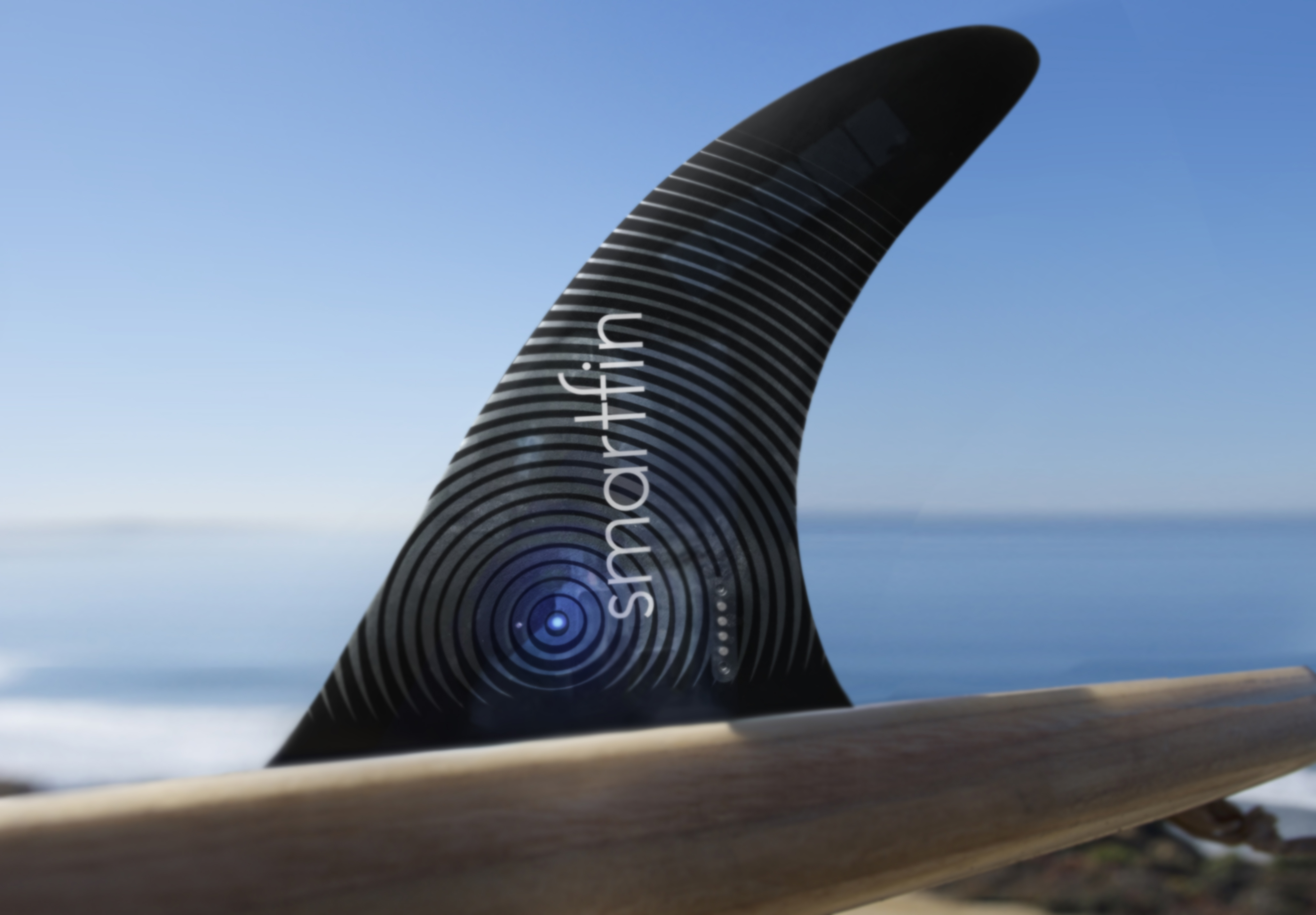
Oceans give our world life. Phytoplankton breathe out 70 percent of our oxygen, and the oceans’ currents and other physical properties are responsible for our weather and climate. Scientists have long been keeping tabs on the ocean with vast networks of sensors, satellites and other equipment, in order to understand more about how it works and to keep tabs on ocean health. But there’s one place where ocean data is surprisingly hard to come by: near the shore.
That’s where a new project called Smartfin is mobilizing an unlikely new crop of citizen scientists: surfers.
“Our founder was thinking about ways that citizen science could be applied to solve this problem of gathering data in the coastal zone,” says Danica Reinicke, program director for Smartfin. “He came up with the idea of putting sensors on surf and paddle boards.”
With Smartfin, surfers and paddleboarders become scientists — and all they have to do is swap out one of their board’s fins. The high-tech Smartfin collects data on conditions in the water and sends it straight from surf to scientists. The precise readings it takes every few seconds on temperature and wave action help researchers studying climate change, coral reefs and more!
Take Part: Smartfin Project
Monitoring the Oceans
Our coasts are full of variety. It’s not just their inhabitants — temperatures and currents vary dramatically at different depths and different distances from land. We’ve all experienced a warm or cold patch while swimming — this sort of small-scale variation is frustratingly hard to measure, even with sensors attached to buoys or piers.
Because Smartfins are attached to surfboards, they can cover much more ground than a buoy anchored to the seafloor. As a surfer glides through the water, the fins’ built-in sensors measure temperature and wave energy. Each fin also has GPS so scientists can pinpoint where data was collected, and the fins transmit data every five or six seconds over cell phone networks to a centralized database.

Smartfin has been continuously improving on its designs: testing out long- and short-board fins, upgrading data transmission and even adding nifty touches like a sensor that turns the fin on automatically when it senses water. Reinicke says they hope one day to add more sensors that can track conditions like dissolved oxygen, salinity, turbidity and more — though it’ll be a challenge to fit everything into the thin fin.
“There’s benefit in just capturing as much data as we can, as broadly as we can, for questions that we come up with in the future. And that’s definitely part of it,” Reinicke says. “But it’s also really important to us that the data we’re collecting now are scientifically useful right now.”
For example, two research projects are already in the works using Smartfin data. One is investigating upwelling, where nutrient-rich water rises from the ocean floor and replaces water at the surface, and the other is on climate change and coral reefs. Scientists are interested in learning why coral bleaching — when a coral dies after expelling its symbiotic algae, usually due to stress like overheating — occurs in some places but not others. Studies like these need data on the temperature of the water at a fine scale, exactly like the fins are capturing.
Get Your Fins Wet
A few fins have already been deployed already for testing. Once the design is finalized, Smartfin plans to distribute the fins to researchers and community organizations for shared use, rather than selling them to individuals. This helps make the fins affordable for surfers, and it’s more sustainable to share the resources. For instance, a researcher might buy a few Smartfins to collect data for a research project they’re doing, then lend them to surfing organizations — like Smartfin partner the Surfrider Foundation — or rental shops near the area they want to study.
“We really want to engage and educate and mobilize citizens around this,” Reinicke says. Collecting data from a buoy, she says, is nowhere near as fun as actively collecting the data while out on your board.
Reinicke estimates the Smartfin team will have their final updates worked out in the next couple of months. Supply chain issues, especially related to electronics components, may cause additional delays, but she’s hopeful that manufacturing will begin by early 2022, with a goal of deploying between 500 and 1,000 fins to local surfers next year.
As for the surfers testing the fins for Smartfin’s pilot projects, they’re stoked. Nearly 100 fins are being tested in the San Diego area.
“If doing what I love (surfing) and being where I love to be (in the sea) can contribute toward scientific research with the ultimate goal of ocean conservation, then I’m stoked to be doing it,” said David Walden, a Smartfin community member from the San Diego chapter of the Surfrider Foundation, in a statement. “Surfing for science. Surfing to create awareness and change. Surfing gives my life both joy and meaning. The Smartfin Project is a joy that gives my surfing meaning. Rad.”
Don’t want to miss the big launch? Sign up for updates by filling out a contact form on the Smartfin website. You can also donate to the cause or let Smartfin know about a community group, research institution, school, surf club or other group that might be interested in sponsoring a fin.
And don’t forget to save the project to your Dashboard on SciStarter!

